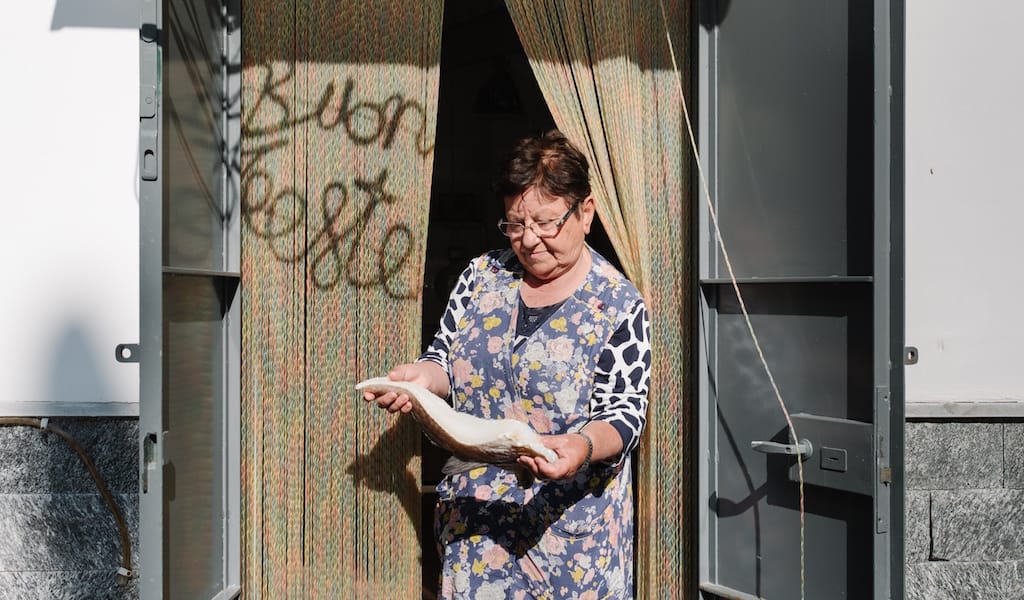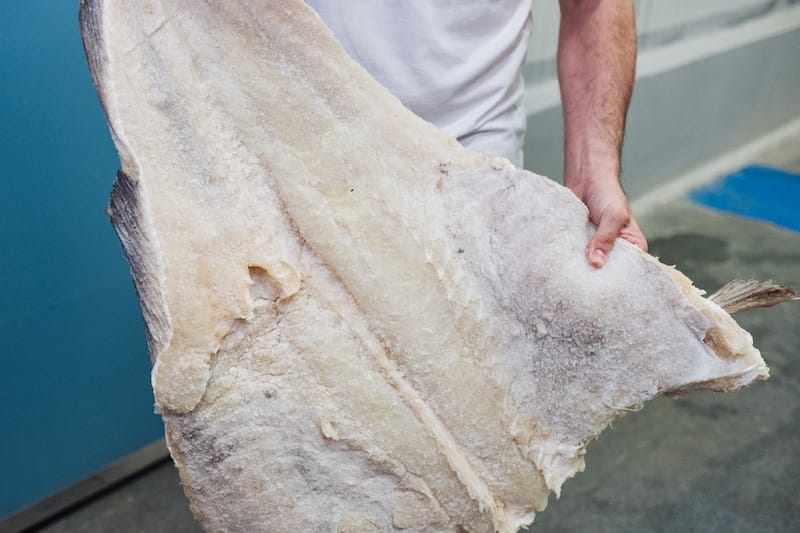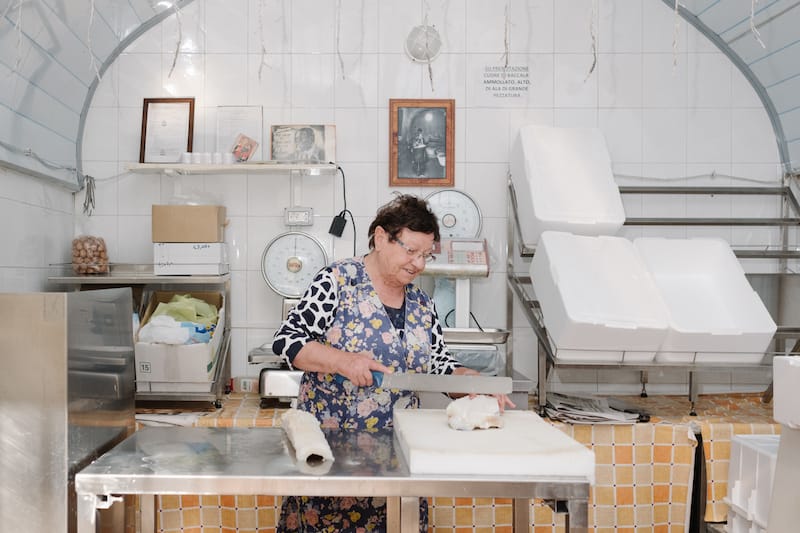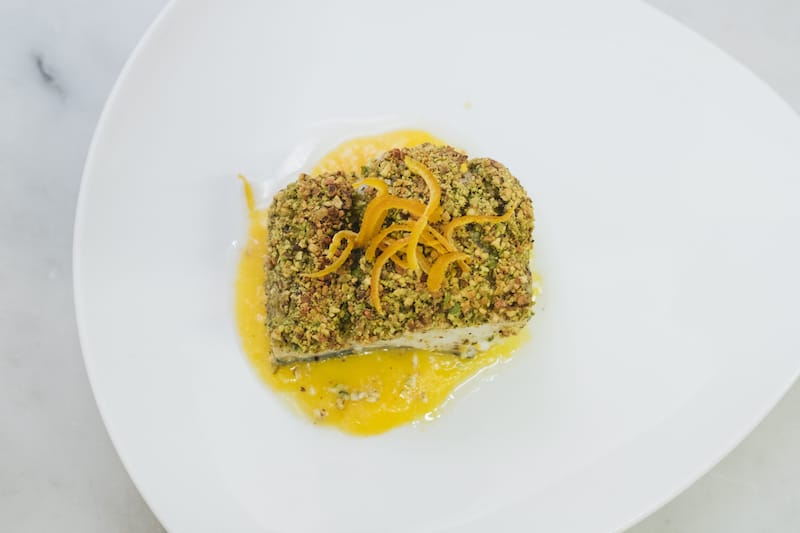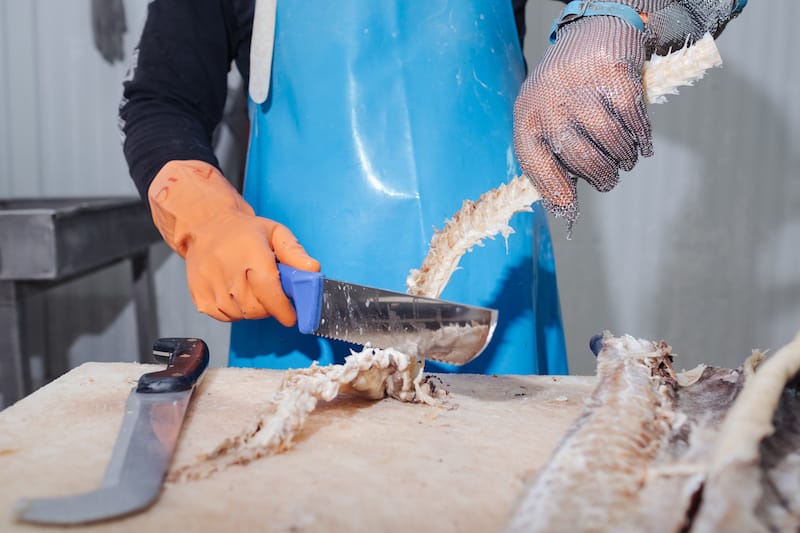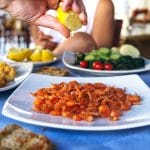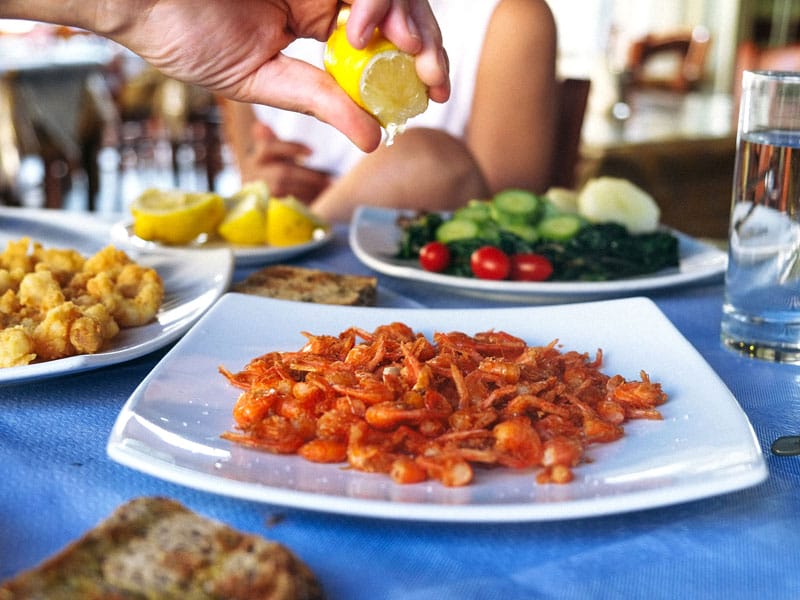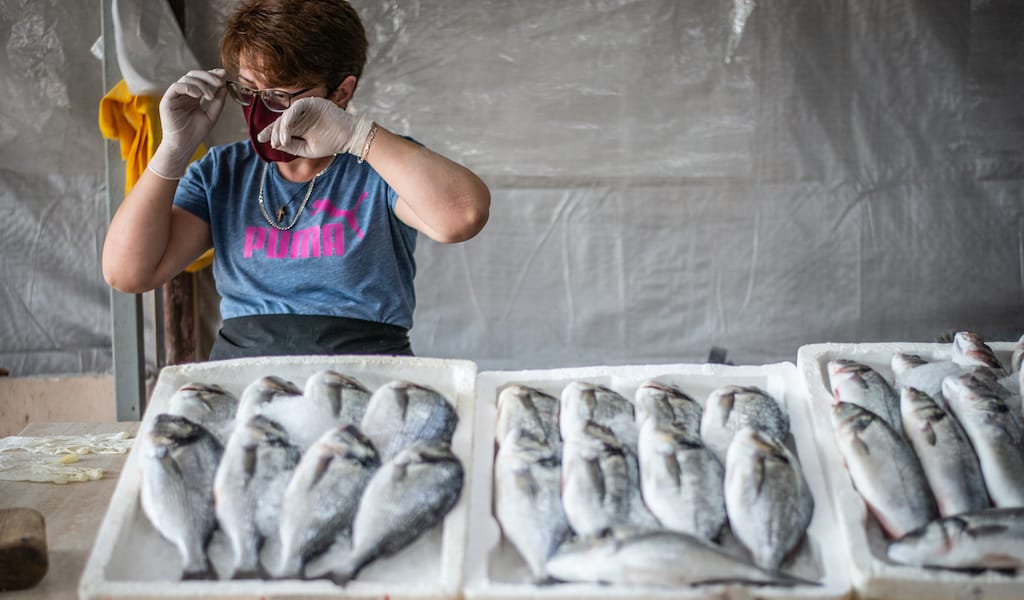For Christmas, a Neapolitan wants to eat three things: fish, seafood and more fish. So important are the creatures of the sea for the holy evening that Christmas is also referred to as the festa dei sette pesci (“feast of the seven fishes”). And while all fish are welcome at the table, one is especially dear to every Neapolitan’s stomach: dried, aged Atlantic cod.
It comes in two similar but distinct forms: baccalà, or salt cod, which, as the name suggests, is cod that has been heavily salted; and stoccafisso, known as “stockfish” in English, which is preserved by being dried in the sun and the wind. Before they are eaten, both are soaked in water to rehydrate and soften them.
Of course, Christmas is not the only time of the year Neapolitans savor baccalà and stoccafisso – they’re enjoyed all year round. Every Neapolitan trattoria has at least one version of salt cod or stockfish on the menu. Popular dishes include baccalà alla Luciana, where the fish is baked in a savory tomato sauce with olives, or alla bianca, a salad of salt cold blanched in white wine with lemon juice and lettuce. Battered and deep-fried, it makes excellent fish with or without chips. Antica Baccaleria Porta Capuana, the oldest baccaleria in town (you can identify these specialty shops by the huge dried fish hung on display outside and the big water buckets for soaking and rehydrating thick white pieces of fish), serves its superior stockfish raw and sliced thinly, like sashimi, with nothing but a drizzle of lemon juice.
Great baccalà can be had in central Naples, but true preserved cod aficionados head to Somma Vesuviana, a small town at the foot of Mount Vesuvius, about 30 minutes outside the city center. Somma is the region’s salt cod capital – indeed, it is the second biggest importer of aged cod in all of Italy (second only to Venice).
To understand the popularity of preserved Atlantic fish in a country surrounded by the Mediterranean (and how an inland town came to be famous for it), one has to go back in history. In his excellent book Cod: A Biography of the Fish that Changed the World, Mark Kurlansky writes that it was the Basques who first came up with the delicacy: According to his sources, Basque fishermen discovered the rich cod grounds off the coast of Labrador long before Columbus first reached the New World, or any European settler set foot on North American soil. They just didn’t boast about it, because they wanted to keep the spoils for themselves.
At the right time of the year, it is said, the waters there were so teeming with fish that one merely had to scoop the cod out with a bucket. In order to transport this rich haul home, the Basques preserved it with the help of salt and wind.
Because of its sheer abundance, Atlantic cod became the cheapest animal protein around – cheaper than local chicken or pork or even locally caught fish. Moreover, it was much easier to transport in a time without refrigeration. It soon became a staple not only in the Basque countries, but all around the Mediterranean (and beyond) – and has been ever since. Although today it mostly comes from Northern Europe, as the once rich fishing grounds off the North American east coast collapsed due to overfishing a few decades ago.
And how, of all places, did it end up in Somma, a small town many kilometers from the sea? At the Council of Trent, held in three parts from 1545 to 1563, the Catholic Church decided to forbid the consumption of meat on fasting days; fish, however, was permitted. It was hardly a surprise that the popularity of salt cod exploded. The monks of Santa Maria dell Arco, the vast monastery complex right next to Somma, apparently loved a good feast – thanks to their insatiable appetites, the town became a center of the baccalà trade in southern Italy.
With such a tradition, the town boasts a number of restaurants that specialize in cod dishes. At La Lanterna, maybe Somma’s most famous traditional cod restaurant, the repertoire includes specialties like fried zucchini flowers stuffed with fluffy salt cod purée, or a delicate pasta with stockfish, tomatoes and the famed Somma olives. At lunchtime it’s popular with locals, who can be found munching on whatever daily cod special is on offer.
If you’d rather cook your cod yourself, head over to the small baccaleria of signora Raffaella Nocerino, known locally as Rafelina “la baccalaiola.” She’s been rehydrating and selling baccalà and stoccafisso from her small shop hidden in a backyard in Somma’s old town since 1955. According to the locals, you won’t find salt cod of such quality and for such a good price anywhere in central Naples.
“Baccalà and stoccafisso might be more work than fresh fish, but they also have more flavor.”
For centuries, salt cod and stockfish were typical cibo dei poveri, poor man’s food. “They used to cook it in big pots and bring it for lunch to the farm workers,” says Giorgo Fortunio, who runs Scanfish, one of Somma’s cod import businesses. “People used to mostly eat stoccafisso, because it was even cheaper, because you didn’t need salt to make it. Today this has totally turned around. It is much more expensive, because it is more work to prepare.” For example, stoccafisso requires a longer soak than baccalà before it becomes edible again.
When both types of preserved cod arrive at the Scanfish warehouse in big carton boxes from Iceland, they are as hard as old pieces of wood and need to be cut with great skill and care: The fish cutter has to wear an iron mesh glove (reminiscent of medieval chain mail), similar to the one worn by professional oyster shuckers.
“Baccalà and stoccafisso might be more work than fresh fish, but they also have more flavor,” says Giuseppe Molaro, a young chef who worked in some of the best restaurants around the world before coming home to Somma and opening his own place, called Contaminazioni. Baccalà and stoccafisso are to fish what prosciutto is to pork or Parmesan to milk: If done well, the process of preserving and aging concentrates the flavor of the fish and, just as with the ham, changes the texture to a more complex, chewy bite. While baccalà is, once cooked, still mild and soft, not unlike fresh cod, the stoccafisso develops strong notes of aged protein, almost like a blue cheese or a properly dry-aged steak.
“I just love the texture, the sweetness, the saltiness – they are very aromatic fish,” Giuseppe adds. At Contaminazioni he not only serves the fish’s flesh, but also fries the skin until it’s deliciously crisp and uses the bones for broth.
Whether air-dried or salt-cured, the fish is traditionally divided into three sections: the thick filet, the thinner belly and the tail piece. While the filet is the most prized cut, Giorgio, the baccalà importer, recommends the belly tip, or “the wing” as it is called. According to him, it is the most flavorsome piece and costs a fraction of the filet. “It’s not pretty, but really good,” he says. And that’s the most important thing to a Neapolitan, and not only at Christmas time.
Published on December 09, 2020







































